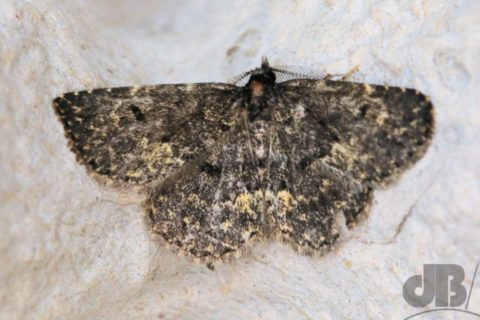Well, after the heady days of late July and August with dozens of different moths coming to the actinic light trap that I borrowed, numbers of species have diminished. The chilly and occasionally damp evenings here in VC29 mean there is less nocturnal lepidopteran activity overall, although there always seems to be a good number of Large Yellow Underwings, Vine’s Rustics, and one or two Setaceous Hebrew Characters in the trap by morning. And, usually, there is the one oddity that keeps me lighting up just for the treat of a new species.
There was a Large Ranunculus a couple of nights ago and a hint of a big, dark Hawk-moth that rattled around in the dark among our shrubbery but didn’t get caught in the trap. It may well have been a Red Underwing or an Old Lady, I didn’t get a good look, but I hold out hope that it was actually a Convolvulus Hawk-moth, and if it warms up again, it may well return. [Had to wait until September 2022!)

Anyway, this morning there was a small dark species on the egg boxes, speckly but sooty black to my bleary eye. It had much more apparent creamy yellow markings once I got the photo up on my screen. Unfortunately, I didn’t get a particularly sharp photo, which is a shame.
It turns out to be a Waved Black Parascotia fuliginaria. It’s unusual in that its resting posture (wing position) is more like the moths known as Geometers (so-called because their caterpillars appear to measure out the earth, inch-worms, they’re often called). The waved black is actually a member of the Erebidae within the huge superfamily known as owlets, the Noctuidae.
Admin and master moth-er Leonard C on the Moths Flying Tonight UK facebook group points out that this species is a fungus feeder (the caterpillars also eat rotting wood) and “will certainly be the star of your catch”, while another admin Mark M told me he was very envious of the find and that for his county, Devon (specifically, VC3), there has only been one specimen recorded since 1995. The nocturnal adults purportedly fly June to August, so interesting that there’s one mid-September.